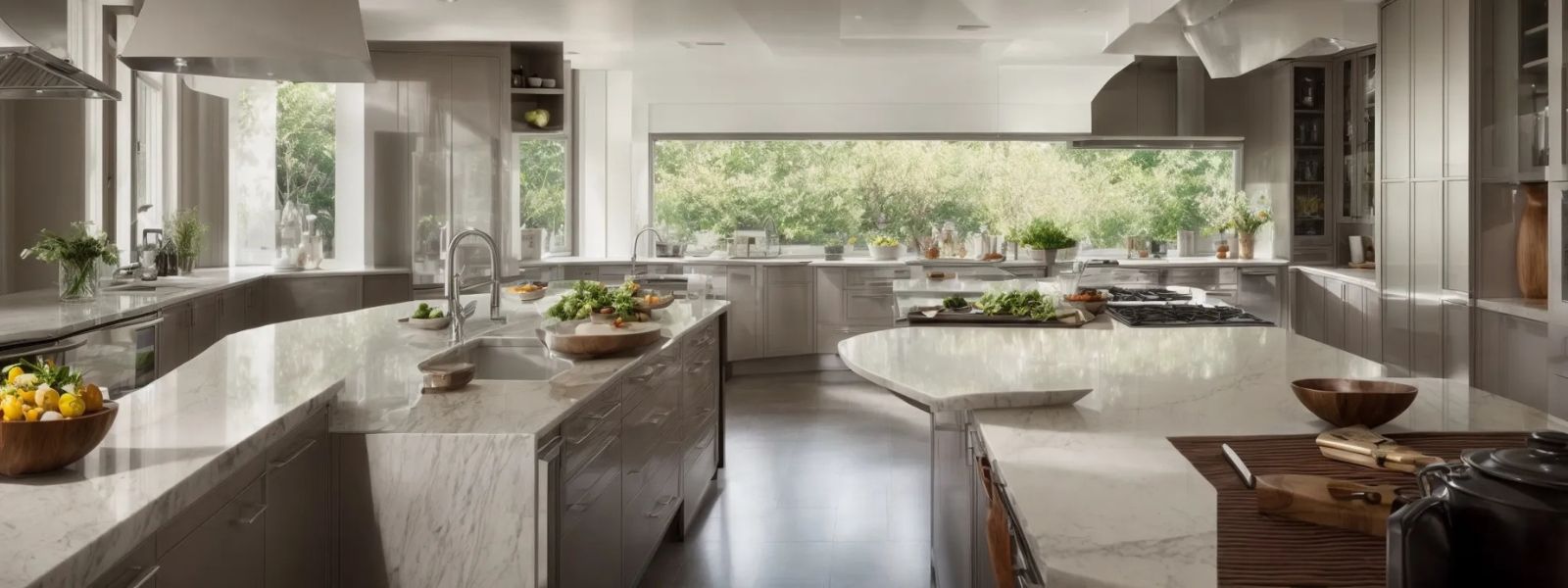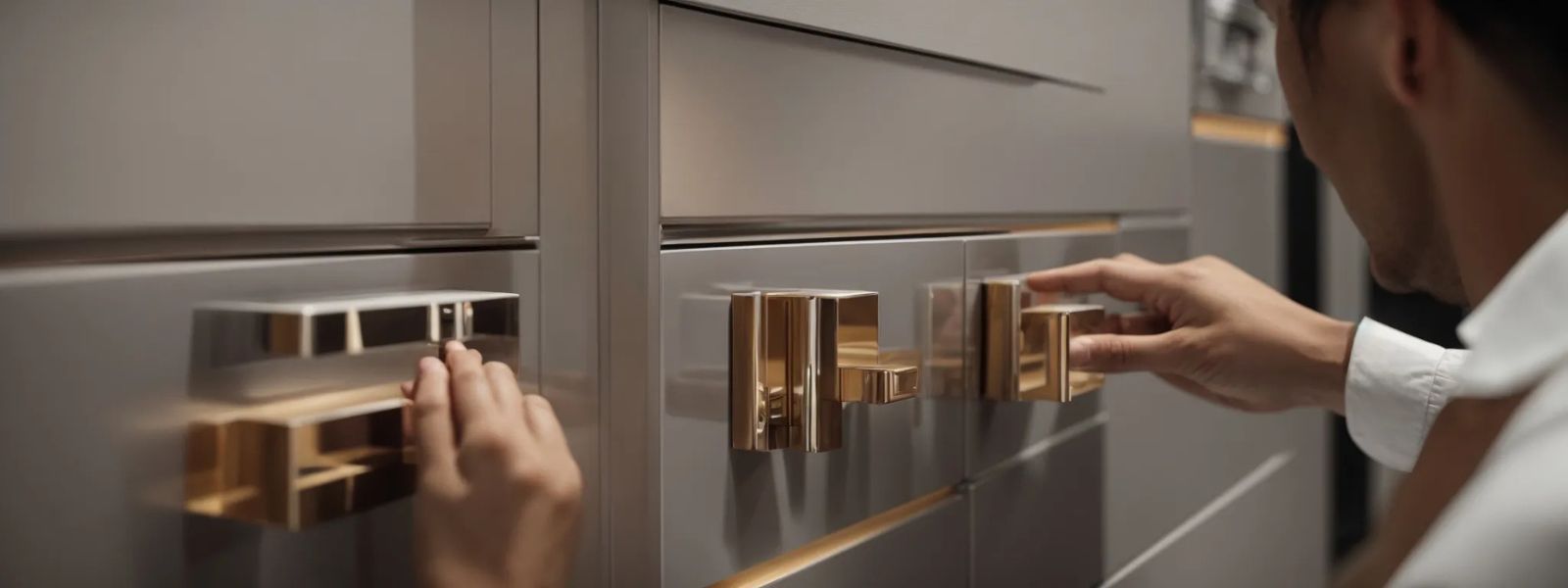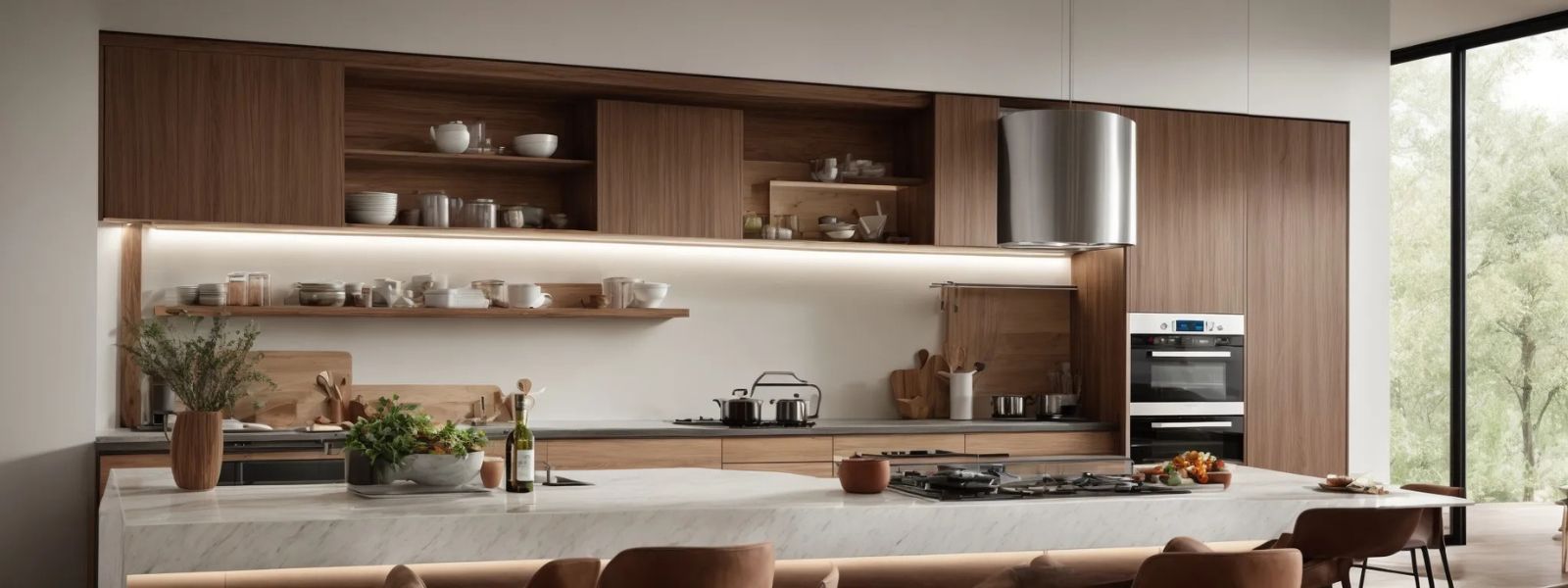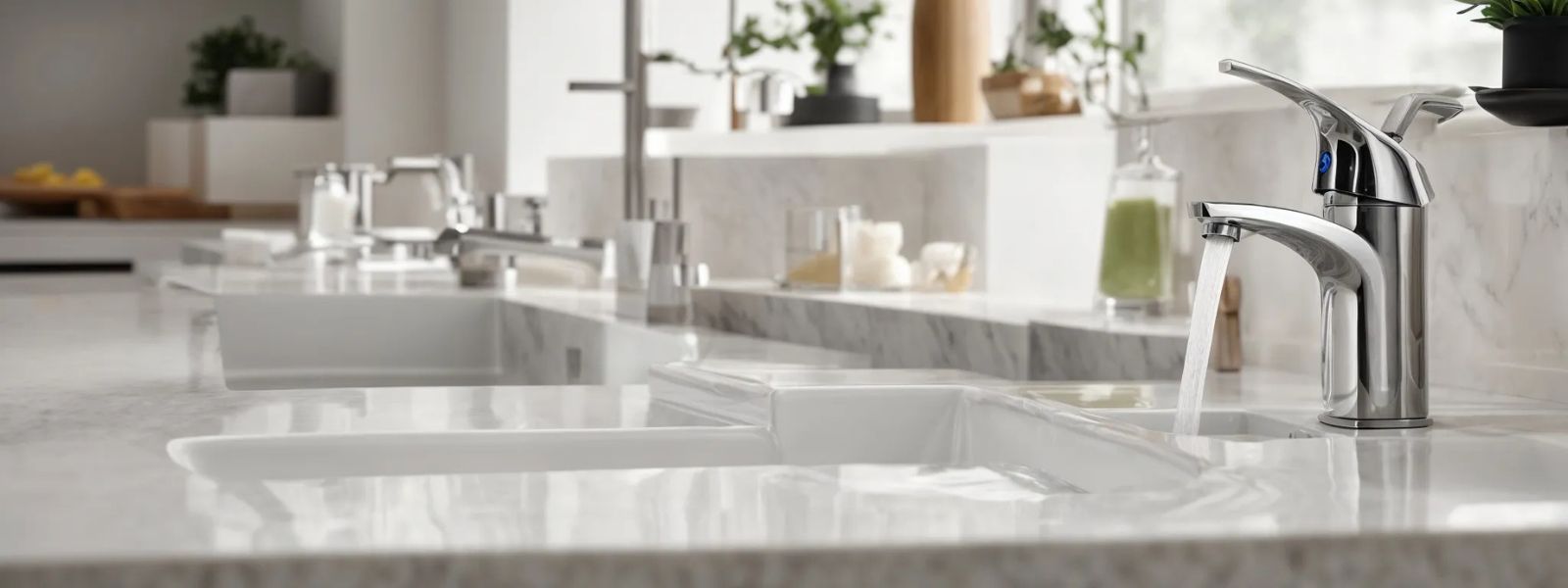Dishwasher Requirements for Commercial Kitchens
link desc

When considering a kitchen makeover or starting from scratch, it becomes clear that the space should not only reflect one's personal style but should also cater to the diverse needs of all who use it. From sleek stainless steel handles to innovative technology, every element plays a role in crafting a kitchen that is not only functional but inclusive to people with disabilities.
A craftsman's eye for both form and the importance of compliance with accessibility guidelines ensures that design does not compromise on ease of access. Choosing the right hardware can transform cabinets from mere storage spaces to empowering platforms for independence and convenience.
Keep reading to discover the key features that can make cabinetry and appliances a boon for every member of your household.

When embracing the task of equipping a kitchen with functionality conducive to the varied requirements of individuals, meticulous consideration is paramount. Kitchens stand as the heart of the home, a gathering place that should welcome everyone with ease and adaptability.
Assessing Mobility and Reach in Kitchen Spaces is essential, ensuring that cabinets, appliances, and work areas are within comfortable reach for users with differing physical capabilities.
In parallel, Considering User Diversity for Inclusive Design serves as the cornerstone for creating spaces that cater to a spectrum of ages, abilities, and lifestyles.
A kitchen that accounts for the full range of human diversity not only enhances the user experience but also aligns flawlessly with contemporary accessibility standards, fostering an environment where each person, regardless of their mobility or reach, can navigate with independence and dignity.
The designs of kitchens often hinge on aesthetic appeal, yet the measure of their true worth lies in how they serve every person's needs, individuals with disabilities included.
Designers and homeowners alike must evaluate whether the placement of kitchen cabinet handles, the height of shelves, and the accessibility of appliances uphold the standards that make them usable by people of all ages and abilities.
This scrutiny is not solely about compliance with legal accessibility guidelines such as the Rehabilitation Act or WCAG; it's about enhancing the quality of life.
Considering the range of motion required to access upper cabinetry or the force needed to operate cabinet latches, invites a thoughtful dialogue on how to create a kitchen space that's not only functional but empowering for users with varying degrees of mobility.
Designing a kitchen with every individual in mind requires more than a cursory nod to standardization; it touches upon the art of crafting an environment that speaks to a medley of users.
It's the delicate balance between the universal needs for function and the specific demands for accessibility that informs the choice of hardware, from a simple cabinet pull to the sophisticated mechanisms that facilitate ease of use for persons with varying abilities.
Experts, when meticulously selecting hardware for the home, strive to blend aesthetics with the practicalities of accessibility features. With each piece, from sturdy grips that aid those with limited hand strength to tactile cues for the visually impaired, designers contribute to a kitchen landscape that is as beautiful as it is accommodating.

Embarking upon the mission to render kitchens accessible to all, one must give due diligence to the selection of hardware that not only elevates functionality but also champions ease of use. At the intersection of design and practicality lie ergonomic solutions tailored for seamless interaction - a testament to innovation's role in forging inclusive spaces.
This discourse ventures into the realm of ergonomic hardware options, meticulously exploring the intricate balance between aesthetic appeal and the tangible benefits of ease and efficiency in operation.
Within this exploration, emphasis resides on the attributes that constitute an effortless grip paired with the uncomplicated mechanics of handles designed to serve users across a broad spectrum of physical capabilities.
Navigating the myriad choices in kitchen hardware can be daunting, yet selecting ergonomic options promises a profound impact on accessibility. It is imperative to consider how the shape, size, and material of a cabinet handle, for instance, can either facilitate or hinder the daily tasks of those grappling with dexterity challenges.
Ergonomic hardware transcends mere functionality; it also bears the potential to subtly integrate into the aesthetic fabric of a kitchen's design. Ease of use, therefore, necessitates a synergy of form and function, ensuring that each selected piece offers an intuitive interface for all users:
Evaluating the grip and operation of kitchen handles is foundational in the conception of an inclusive space. The process involves analyzing how individuals interact with hardware, considering factors like the strength needed to operate and the ease with which a grip can be maintained.
The right choice in handles and knobs directly affects the efficiency with which all users, particularly those with physical limitations, can navigate kitchen tasks. Design elements become more than mere details; they are central to the concept of user experience, where every touchpoint in the kitchen aligns with the principles of accessibility.

In the quest to render kitchens as realms of universal accessibility, an often-overlooked yet critical component is the vertical adaptability of cabinetry.
This holistic approach to design not only fortifies a kitchen's functional repertoire but also ensures that cabinetry systems respond with agility to the ergonomic needs of each user.
The artful selection of hardware becomes instrumental in facilitating vertical movement, requiring a harmonious balance between the aesthetic allure of fixtures and the imperative of functional adjustability.
The ensuing topics delve into the nuanced process of selecting hardware that empowers all individuals to move freely and safely within the kitchen environment, thereby enriching their culinary experience.
Designers and renovators focus intently on harnessing hardware that introduces fluid vertical adjustability to cabinetry. Height-adjustable mechanisms come to the fore, enabling cabinetry to accommodate the stature and reach of various users, enhancing their interaction with the space.
By incorporating such adaptable hardware, cabinet doors can glide upwards or downwards with a simple gesture, ensuring that both standing users and those in wheelchairs have equal access to storage. This seamless integration of dynamic hardware underpins the commitment to create kitchens where accessibility and functionality converge.
The confluence of design appeal and functionality emerges as a critical factor in kitchen cabinetry that caters to all. Craftsmen and designers alike toil to Seamlessly Blend Hardware which adheres to the highest standards of accessibility and complements the visual ethos of the space.
Utilitarian elements like cabinet hinges and lifts are infused with a sense of style that echoes the overall kitchen aesthetic, ensuring that practicality dictates design without sacrificing elegance:

The modern kitchen serves as more than just a space for culinary creation—it represents an arena where hygiene and convenience are paramount, solidifying its role as a sanctuary for both nourishment and well-being.
Touchless technology stands at the forefront of this evolution, a marvel of design that offers contact-free operation, reducing the transmission of germs and easing the daily routine.
Through an exploration of motion-activated faucets and dispensers alongside the advantages offered by hands-free appliances, this dialogue unveils the often-undiscerned value of integrating such innovative solutions into the heart of the home, promoting a safe, comfortable, and inclusive environment for all users.
In the tapestry of modern kitchen design, touchless technology emerges as a poignant innovation, offering both enhanced hygiene and user convenience. Motion-activated faucets and dispensers serve as pillars in this paradigm shift, streamlining kitchen tasks with their intuitive user experience and reducing contact points that can harbor unwelcome germs.
The integration of these advanced fixtures represents a leap forward in accessibility, providing a boon for individuals with limited mobility or strength. By enacting simple gestures, users can command the flow of water without the strain of traditional faucet handles, a feature particularly beneficial for those with arthritis or other conditions affecting dexterity:
Hands-free appliances are charting a new course in kitchen accessibility, providing individuals with tailored conveniences that enhance their culinary endeavors.
These innovative devices, equipped with advanced sensors, allow users to initiate operations with a simple wave or vocal command, vastly simplifying the experience for anyone, particularly those with a speech disability or physical limitations.
The transition to hands-free technology in kitchens represents a significant stride toward a future defined by inclusivity and ease. Merging the principles of universal design, these appliances offer a liberating solution that honors the individual needs of users, ensuring a harmonious relationship between functionality, hygiene, and independence.
Designers and architects alike recognize the critical role contrasting colors play in enhancing visual accessibility within a kitchen space. By employing sharp color distinctions between cabinetry and hardware, individuals with visual impairments can more easily discern and locate essential elements.
Utilizing stark contrasts or vivid hues not only caters to the functional needs of the visually impaired but also Infuses the Kitchen With an Inviting Vibrancy. This approach ensures that all users, irrespective of their visual acuity, can interact with the environment confidently and safely.
Inclusive design must account for the vast spectrum of visual capabilities among users. Implementing hardware with contrasting colors not only aligns with accessibility guidelines but also elevates the overall aesthetic, making for a kitchen that is both practical and visually appealing.
The strategic use of color sets a solid foundation for visual accessibility, empowering individuals to navigate the kitchen with greater ease. Craftsmen and suppliers are thus encouraged to present a collection of hardware that exhibits not just durable functionality but also thoughtful, accessible design through color differentiation.
Optimizing kitchens with accessible hardware is essential to create environments that accommodate everyone, ensuring independence and dignity for users with diverse abilities.
Ergonomic handles and height-adjustable features are crucial for individuals with mobility and dexterity challenges, while touchless technologies prioritize hygiene and comfort for all.
Additionally, incorporating contrasting colors enhances visual accessibility, allowing those with visual impairments to navigate the kitchen space with confidence.
Each design choice must integrate form and function, balancing aesthetic appeal with the practical needs of users, reflecting the commitment to inclusivity in kitchen design.
Custom cabinets provide you with a quality personal customized selection of wood, style, finish, door styles, and hardware to achieve your goals and needs. Stock cabinetry is made in an assembly line in batches at different times and often results in non-matching materials and finishes.
Because you have total control over every detail of your cabinets, custom-built cabinetry is worth the price. You have an endless number of options, from the size and height of the cabinets to the style, hardware, and color of the finish on your cabinets.